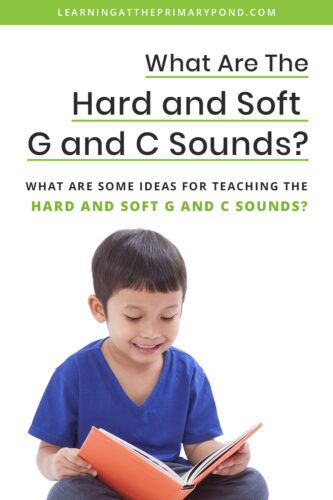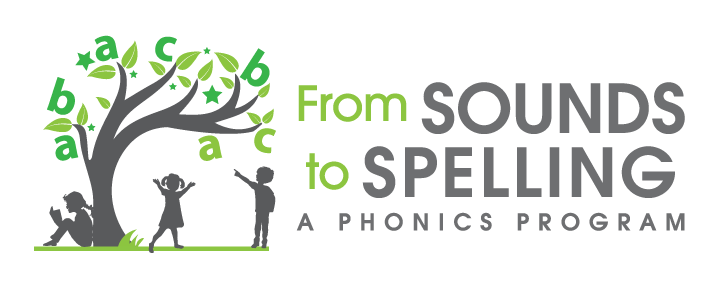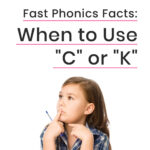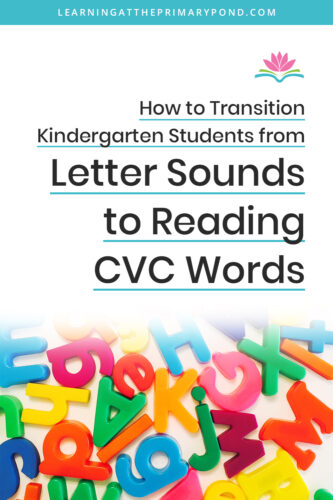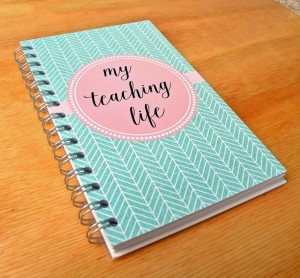G and C are tricky letters! If students don’t know the difference between their hard and soft sounds, “Let’s race!” can easily become “Let’s rake!” ?
In this post, I’ll explain the difference between hard and soft sounds. I’ll also share how I teach the hard and soft g and c sounds, as well as when I teach them.

What Are the Hard and Soft G and C Sounds?
G can make two sounds: /g/ or /j/.
The hard g sound is more common than the soft g sound. The hard g sound makes the /g/ sound as in gum. The soft g sound makes the /j/ sound as in giant.
C can make two sounds: /k/ or /s/.
Similarly, the hard c sound is more common than the soft c sound. The hard c sound makes the /k/ sound as in cat. The soft c makes the /s/ sound as in city.
Here is a list of words for hard and soft g and c:
- hard g: goal, goat, gas, gutter, go, game
- soft g: gem, giraffe, gist, gym, germ
- hard c: cup, coat, carrot, cow, can, curly
- soft c: cent, circus, cereal, circle, center, cyclone
These sounds can also come at the end of a word (rug, picnic) or mid-word (rigid, bicycle.)
As with most phonics “rules,” exceptions do apply! For the hard/soft g, there are (unfortunately!) quite a few. Words like give, begin, get, girl, gift don’t follow the rules (I’ll go over the rules later in this post).
And then there are some fun words that include both a hard AND soft letter sound – recycle, reconcile.
When Do You Teach Hard and Soft G and C Sounds?
In my phonics program, From Sounds to Spelling, I teach the hard sounds of c and g as part of the Kindergarten program.
If you use the terms “hard” when teaching those sounds, this may be helpful when kids (eventually) learn the soft g and c sounds.
Toward the end of 1st grade, I introduce the soft c sound. Then, at the beginning of second grade, I teach the soft g sound.
One important note: Mastery of these sounds (as far as spelling goes) is not expected until after 2nd grade. So while I introduce these concepts to help students with reading, I don’t expect them to become pros at spelling words with these sounds.
How Do You Teach Hard and Soft G and C Sounds?
For these sounds, the most important question to ask is “What comes right AFTER the letter g/c?” This will help determine whether it’s a hard or soft sound.
When I first present the hard and soft g, I like to use a little activity to see if students can discover the difference. You can pass out word cards to students (perhaps with pictures, to help) and see if they can place themselves into two groups. Some students will have words that begin with soft g, and others will have words that begin with hard g. (You can explain hard and soft g beforehand, OR you can see if they figure it out on their own first.)
Explain: “Some words make a hard g sound /g/. But others make a soft g sound like /j/.”
You can even take it one step further and see if they discover any patterns about WHEN g says /g/ and when it says /j/.
Say “The tricky thing about the letter g is that the sound changes, depending upon what letter comes after it.” Review the letters that make the g the hard sound, like in “gate” (o, a, u, r, l) and the letters that make the g the soft sound, like in giraffe (e, i, y).
Lastly, I’d display the “Is g hard or soft?” poster so that students can see this rule in writing and use it as a reference.

The hard and soft c can be taught similarly. The sound of the letter c changes depending upon what letter comes after it. Review the letters that make the c the hard sound, like in “cap” (o, a, u, r, l) and the letters that make the c the soft sound, like in “face” (e, i, y).
Word or picture sorts are another great activity for working on hard and soft g and c.
Conclusion
I hope this information on hard and soft g and c sounds is helpful to you! If you need more resources to teach this or other phonics skills, check out my phonics program, From Sounds to Spelling.
This program contains complete lesson plans, lots of activities, picture and word sorts, decodable texts, phonics posters, and more!
Happy teaching!
